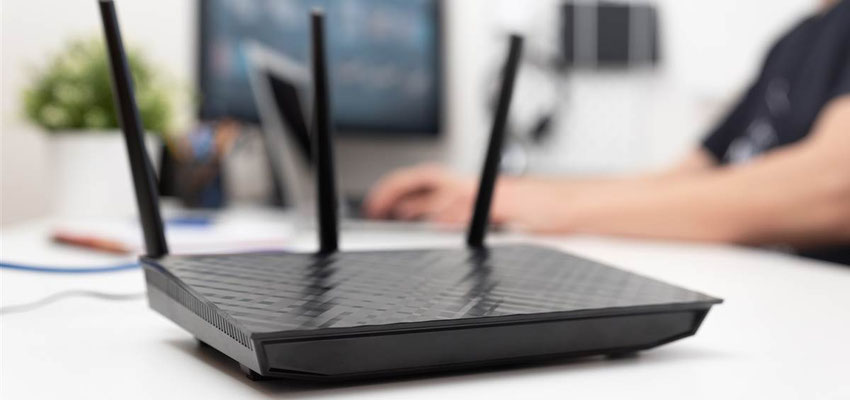
Upgrading Your Router’s Firmware
Posted May 26, 2020, 8:21 a.m. by Emil S.The router is the most vital part of any home’s Wi-Fi network setup. It connects your computer and all your devices and makes it possible for them to access the Internet. It also functions as a firewall that protects those devices and the delicate information they hold from any intrusion from incoming data traffic your network receives daily.
Just as you would diligently update your smartphone regularly, your router, too, should receive the amount of love and attention it deserves.
One way to ensure that it will continue to be reliable and perform optimally is to update it to its latest firmware version.
What is a Router Firmware?
Router firmware is the built-in software that can be compared to a BIOS (Basic Input/Output System), which is the firmware of a personal computer. The BIOS chip controls all the low-level functions of the different hardware components of a computer and how the operating system interacts with them and the connected peripherals.
Similarly, the firmware of a router is also software embedded into it that controls its basic functions. Aside from packet-switching, among these functions are providing the network protocols, security, administrator controls, and others.
It’s also stored in non-volatile memory, meaning the router retains the instructions stored in its memory even if it’s turned off. And it can be “flashed” like a computer BIOS as well. Updating the router’s firmware is sometimes referred to as “Flashing the Firmware.
Reasons to Upgrade the Firmware
One of the essential reasons for getting an upgrade – whether it be for games, apps, or even operating systems – is to fix bugs. It’s not a perfect science, and even a router’s firmware may need some fixes to problems that pop up from time to time.
The most common reason that may motivate people to upgrade is to improve performance. Sometimes an upgrade will do just that, and speed up your Internet a bit. The last thing you want to see from your connection even in the slightest is lag, especially if your household is heavy into multimedia streaming and online gaming.
Another crucial fix is a security upgrade. Any holes in security can leave your network vulnerable and increase the risk of your devices being hacked or infected by viruses and malware. You should be diligent in downloading and installing these types of updates that would plug those holes.
The IT industry develops at a break-neck pace, and new developments can render current devices obsolete quickly. Upgrading your router to the latest version may give it new features that can enhance its functionalities and efficiency, and help it keep up with the times.
How to Log In to your Router
Most routers have a web-based interface that lets you update its firmware, download upgrades, and change configuration settings. It can be accessed by your browser, just like any website. You’ll need to remember your router’s default IP address, also known as the Default Gateway.
After you’ve entered the default numbers on the address bar, you’ll be greeted by a login dialogue box. Enter your proper credentials. Once you’re in, you’ll see the router’s UI with all the administrator controls at your disposal.
Finding the Default Gateway
In case you don’t know what the Default Gateway is, follow these steps that will show you the correct one.
- Open the Command Prompt by entering “cmd” on the search bar and selecting “Command Prompt” on the results.
- Type in
ipconfig/alland look for the line that saysDefault Gatewayfor the address.
How to Upgrade Your Router’s Firmware
- Once a new firmware update becomes available, you’ll need to visit the vendor’s website and navigate your way to the router’s support page.
- Download the latest firmware update, which is usually packed in a zip file.
- Unpack the zip file’s contents in a location in your computer that’s easy to find, like the desktop.
- Log in to the web interface of the router.
- Next, find the page where you can upgrade the firmware. Consult your router’s user manual if need be.
- Click the button that will ask you for the file. Select it from the location you unpacked it. Some routers, though, will require you to have a flash drive containing the firmware plugged into its USB port.
- Either way, once you click a button, usually marked “upload” or “update,” it will begin flashing the firmware.
- Wait for it to finish, and once it’s done flashing the firmware and overwriting the old one, you need to reboot the router.
After that, the update will be complete. Keep in mind that your router has to stay on while the upgrade is going on. If by any chance, the router is turned off during this process, whether it be by accident or bad luck, then that may render it utterly useless.
Some routers will do all the work of downloading the flashing the new firmware automatically, saving you from the hassle of doing it yourself.
Another thing to take note is that flashing the firmware might reset the router configurations back to their default settings. It’s a good idea to take advantage of any feature that would allow you to save these settings that you can restore later on. It will save you a lot of the headache from going through the whole configuration process all over again.
